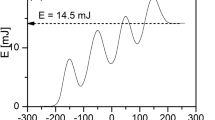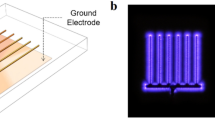Abstract
WAR-TIME developments in high-frequency dielectric heating seemed to offer new possibilities in the control of seed-borne plant disease. By this method the temperature of the whole of a mass of grain can be raised fairly uniformly. It should therefore be superior to earlier means of dry heating, where, owing to the low thermal conductivity of the sample, the centre of the mass does not attain the required temperature when the outside is correctly heated. Hot-water treatment can maintain the necessary temperature throughout the mass, but is a slow and costly process in commercial practice. A method of uniform dry heating would find its greatest application in the control of internal seed-borne fungal diseases such as loose smut of barley and wheat. Experimental work with such diseases, however, necessitates the development of new techniques for evaluating the effect of treatment. Preliminary work was therefore carried out with the seed-borne phase of leaf stripe of oats (Helminthosporium avenæ). The amount of this disease can be estimated fairly rapidly by growing the oats to the seedling stage, or by plating out the seeds in petri dishes.
This is a preview of subscription content, access via your institution
Access options
Subscribe to this journal
Receive 51 print issues and online access
$199.00 per year
only $3.90 per issue
Buy this article
- Purchase on Springer Link
- Instant access to full article PDF
Prices may be subject to local taxes which are calculated during checkout
Similar content being viewed by others
Author information
Authors and Affiliations
Rights and permissions
About this article
Cite this article
GRAINGER, J., SIMPSON, D. Electronic Heating and Control of Seed-borne Diseases. Nature 165, 532–533 (1950). https://doi.org/10.1038/165532a0
Issue Date:
DOI: https://doi.org/10.1038/165532a0
Comments
By submitting a comment you agree to abide by our Terms and Community Guidelines. If you find something abusive or that does not comply with our terms or guidelines please flag it as inappropriate.



